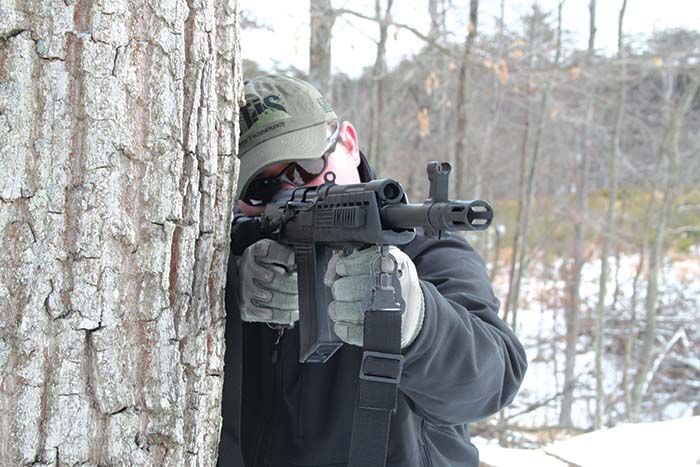Krebs Custom S12 is a serious alternative to more U.S.-centric combat shotgun designs that are tube fed and typically pump action. Krebs Custom S12 Tac-18 is all business, especially when viewed back towards the muzzle.
By Todd Burgreen
The U.S. standard for the combat shotgun has been pretty well confined to the “pump-action fed via tube magazine located under the barrel;” John Browning showed the way with the Model 1897. There have been lever and bolt action shotguns as well, but these did not impinge on the pump action’s status, to which all others are compared. This is based on its simplicity to operate, reliability, and ability to handle a multitude of ammunition types. While semiautomatic shotguns have showed capability, few have demonstrated the “hell and back” reliability necessary to gain the confidence of users in life or death situations. Leave it to the Russians to adapt their ultra reliable AK operating system to the combat shotgun; thus challenging assumptions to what a combat shotgun should be with the Saiga S12 – a scaled-up AK-style action fed from detachable magazines.
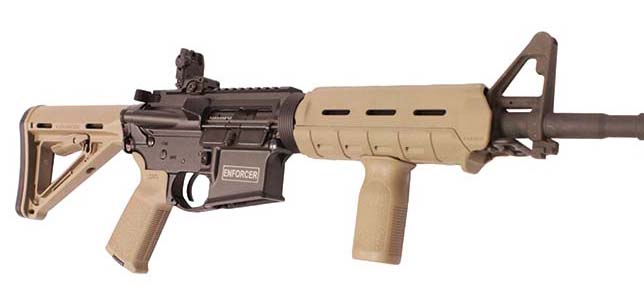
The Saiga S12 uses a rotating bolt operated by gas-piston ala AK. For clarities sake, Gennady Nikonov is the Russian designer responsible for taking Kalashnikov’s AK design and adapting it into shotgun form. Obviously, a 12 gauge shell is much larger than a 7.62×39 rifle round. The 12 gauge’s flat hull design further compounded design adaptation issues, especially in terms of magazine design. In brief, the Saiga S12’s rear and forward trunnions were reinforced with the op-rod piston shortened and bolt carrier modified allowing for shell clearance during the ejection process in the firing cycle. The bolt head was enlarged to accommodate the larger 12 gauge shell face along with the top cover opening to provide clearance for the larger 12 gauge shells compared to the original rifle round size.
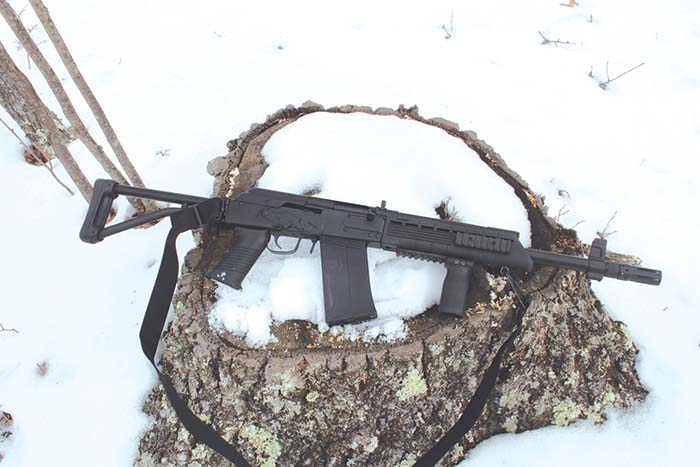
Though modified to meet import requirements via sporter stock with no pistol grip, the heart of the Saiga shotgun is an AK operating system. The process to modify the Saigas back into the more familiar AK profile, albeit with much larger hole in the barrel, is well known and a relatively straight forward process involving moving the trigger guard forward to make room for pistol grip, replacing fire control group, and installing AK stock of choice. Krebs Custom was one of the first AK “smiths” of note in the U.S. with pioneering work on AK rifles and Saiga shotguns. The Krebs Custom portion of the S12 shotgun equation is crucial and is a significant upgrade over a standard Saiga S12 shotgun as it arrives in the U.S.
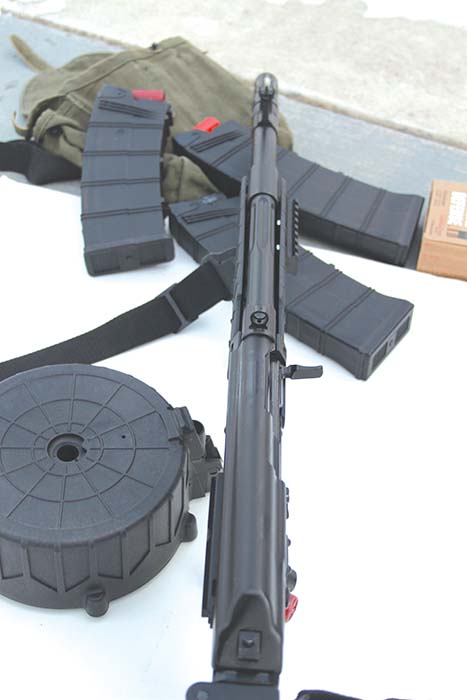
The Krebs Custom ghost ring rear sight is clearly evident and mates up to a front sight that Krebs extends out to end of barrel.
The Krebs S12 is all business with its black finished receiver, 18 inch barrel with a Kreb’s muzzle device, foldable rear stock, SAW-type pistol grip, and black synthetic forearm giving an overall length of 40.5 inches weighing 7.5 lbs. empty. Krebs installs and tunes a G2 trigger along with dehorning and smoothing the Saiga S12’s edges. Krebs smoothes and polishes the bolt carrier group and receiver guide rails. Even without firing a live round the Krebs S12 superiority over a standard Saiga S12 is easily detected in the smoothness of the action, trigger pull, quality of re-finish and overall weapon feel. A Krebs Mk VI safety is fitted to the S12. The Mk VI safety features a manual bolt hold open notch in an effort to provide one possible solution to the Saiga magazine change conundrum, which we will go into more detail about below. A Kreb’s ghost ring rear sight finish off the Krebs S12 package moving the front sight assembly to the barrel’s muzzle area thus extending the effective sight radius beyond the standard notch and bead provided from the factory.
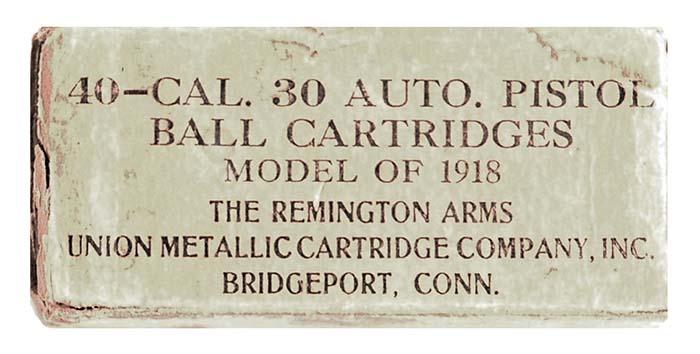
The AK operating action is the benchmark for reliability in assault rifles with the Saiga 12 gauge following in this pattern. We should guard against being biased toward the Saiga S12 with our proclivity for tube fed shotguns. The magazine fed Saiga S12 positively impacts handling by locating the ammunition at the center of the weapon allowing for faster handling. The Saiga changes previous instilled training centered on tube fed shotguns such as shoot 2 reload 2 tactics. The Krebs Custom Saiga S12 is fed via 5, 8, 10, 12-round stick magazines along with drum magazines with capacities as high as 30 rounds. AGP stick magazines of different capacities combined with high capacity 20-round drums from MD Arms and Alliance Armaments were utilized during this T&E. The drums represent performance enhancement in a big way. A nuance discovered with using the drum magazines is that your hand placement on the forend needs to be pushed forward slightly more than normal to get around the drum’s circumference. The Saiga S12 12 gauge is closer to an assault rifle in its manual of arms versus a tube fed shotgun most are more familiar with.
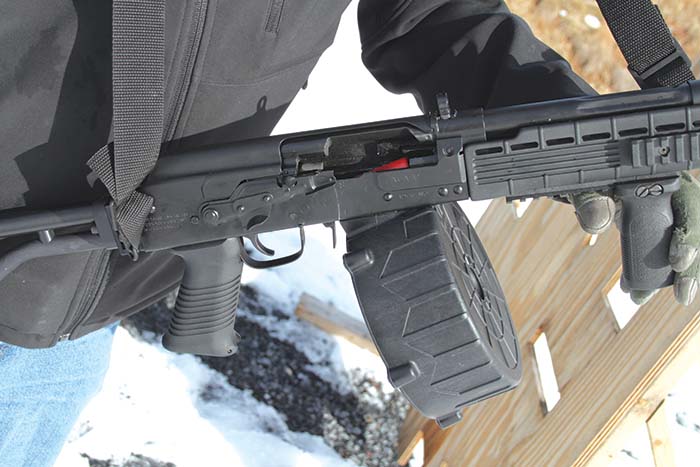
A definite nuance with operating the Saiga S12 is the magazine change technique. This is a twofold issue in terms of making sure magazines fit and function as well as manual of arms for running the S12 shotgun most efficiently. The Saiga S12 has its own manipulation techniques that need to be accepted and not resisted. The Saiga S12 shotgun does not have a last round hold open feature. The size of the 12 gauge rounds make full capacity magazines problematic to lock in place with the bolt forward. Magazine changes are definitely different in nature; even if you are already familiar with the AK “rocking” method via rifles. The girth and weight of the Saiga magazines take time to get used to when performing reloads under speed compounded by the need to keep the Saiga’s bolt held open allowing for the magazine insertion. The Kreb’s Mk VI safety with bolt hold open notch proved a worthy addition to the Krebs Custom S12 in this regard by allowing the operator to lock the bolt rearward allowing for smoother insertion of loaded S12 magazines.
In terms of combat or personal defense, shotguns fire two primary types of shells—slugs or buckshot. There are various types of each. This ability to handle different styles of projectiles is at the root of shotgun effectiveness and popularity. The Krebs Custom S12 was tested with Wolf Ammunition, Hornady and Federal Premium #00 buckshot 2 3/4 inch. The Federal Premium FliteControl and Hornady Critical Defense buckshot load utilize special wads for tighter buckshot patterns – thus longer effective range. Federal Premium, Winchester, and Wolf 1 ounce slugs were also tested with the Krebs S12. The recently introduced Winchester PDX 1 12 gauge loading combining a 1oz slug and three-#00 pellets was also tested. The Winchester PDX 1 load harkens back to the “buck-n-ball” loads used by our forefathers against the British in the Revolutionary War and each other during the Civil War.
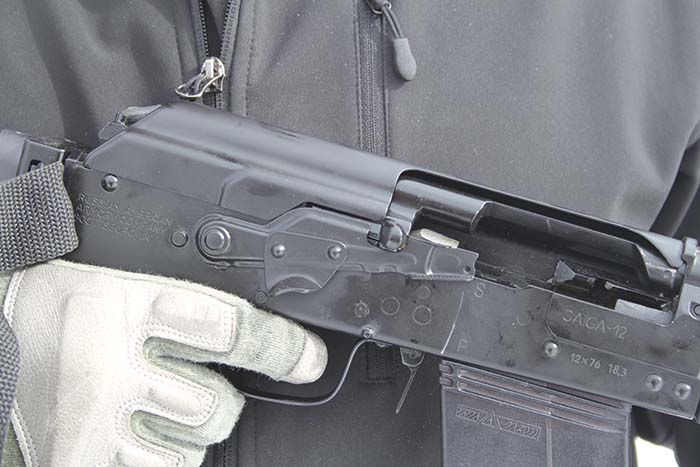
The Krebs Custom S12 generated spreads of 5-10 inches at 10 yards with the tested buckshot loads. This indicates that a shotgun must be aimed to ensure accurate shot placement at close ranges. The buckshot spread increases to 12-22 inches at 25 yards with the Federal Premium and Hornady loading being on the tighter side and standard buckshot more dispersed. The Federal Premium and Hornady #00 buckshot load is the epitome of the new age tactical buckshot taking advantage of advances in wad technology to keep patterns tighter and thus extending effective range of #00 buckshot.
Many would comment that past 30 yards one should resort to slugs. Testing with the Krebs S12 combined with Federal Premium and Hornady buckshot indicated otherwise. The combination was able to place the majority of its pellets on IPSC style silhouette targets out to 40yards. Slugs performed in the 4 inch range at 50 yards with the Kreb’s ghost ring sights proving their worth. Steel man sized targets were hit regularly at 100 yards with a certain amount of satisfaction derived witnessing the 1 ounce Federal and Wolf slugs rocking the target back on its base.
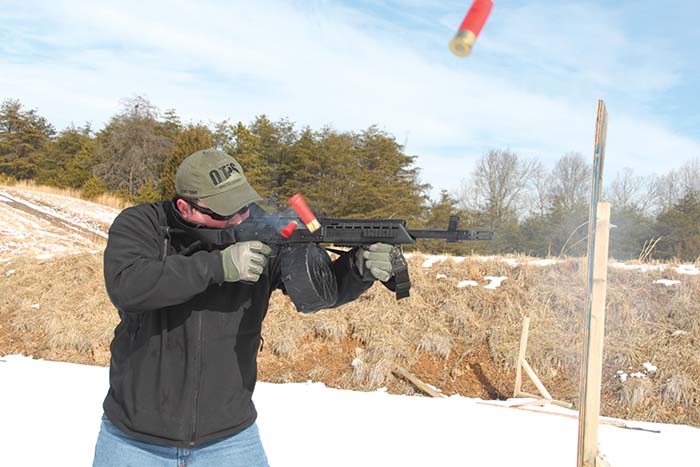
The Saiga gas-operated action is simple, effective, and reliable as expected considered it is derived from the AK operating system. Nearly 300 rounds of various loads were fired in this T&E, including light birdshot. The Saiga S12’s gas system has two settings allowing for it to be adjusted to ammunition type used. This system allows for use of most any ammunition type including low brass shells and aids in recoil management by restricting gas flow setting when firing full powered buckshot or slug loads. Low recoil buckshot or slugs need to be proofed as to which setting works the best. The Krebs S12’s gas setting was not moved during testing and worked with everything from low brass birdshot to slugs. Credit for this is given to Marc Krebs asking ahead of time what loads I would most likely be using. Disassembly for maintenance is simple and allows for effective cleaning in minimal time. Anyone that is familiar with the AK rifle will be right at home on the Saiga S12 shotgun.
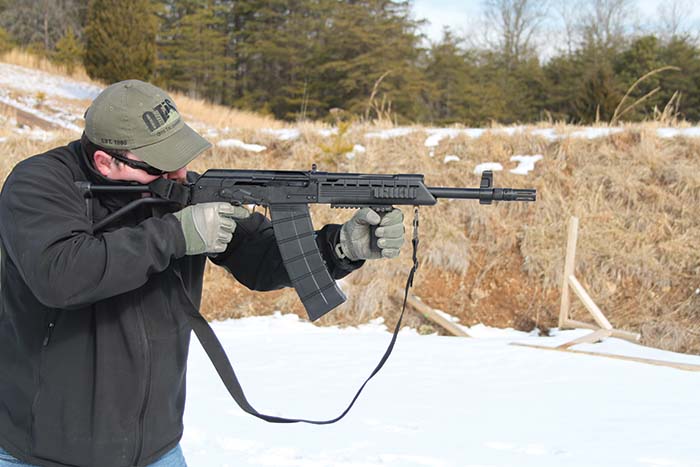
Range time consisted of the patterning described above along with other exercises trying to get a better appreciation of how the Krebs S12 shotgun handles and performs. The drills involved moving between barricades engaging shoot and no-shoot targets. Another drill used was based on engaging several shorter range targets out to 30 yards before having to engage a designated target placed 90 yards away. The Krebs S12’s “ghost ring” sight come into its own during this type of work. The “ghost ring” gives nothing up in terms of CQB ranges with front sight as easy to place on target as bead and ultimately proved better at accurate placement of fire. This necessitated a switch from buckshot to slug before engaging. This is accomplished by switching magazines in the Krebs S12. The relatively limited capacity of shotguns compared to high capacity magazine fed rifles is often listed as major detriment of choosing a shotgun over another weapon type. One of the most crucial things to learn when choosing a shotgun for defense is how to keep it from running empty of ammunition. U.S.-centric tube fed shotgun methods must be avoided when deploying the Krebs S12. The Krebs S12 is best operated as a magazine fed assault rifle.
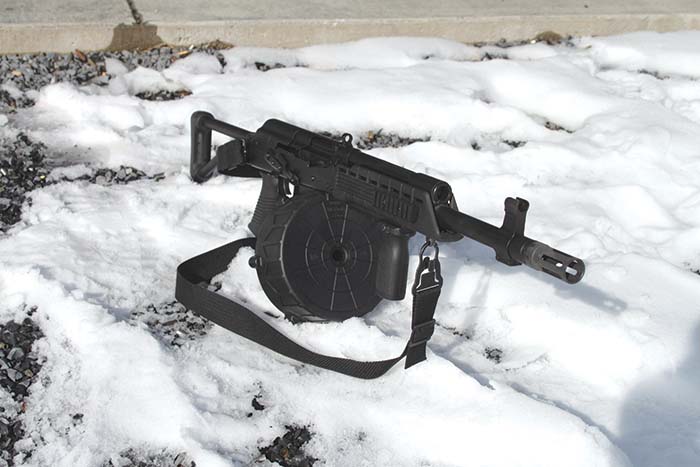
A great test for any shotgun especially one to be used in a quick reacting CQB setting is shooting thrown clay targets. This also verifies reliability with ammunition with less recoil impulse than slugs or buckshot and helps get more rounds fired to verify operating soundness. Low brass Wolf Ammunition and Federal Premium #7.5 shot was used with no issue. The ghost ring sight was no problem at all with the rear sight “disappearing” naturally as eye focused on flying clay target and front sight leading it. The low brass shells were a welcome relief in terms of recoil. Yes, the Krebs S12 is semiautomatic, but it still is a 12 gauge and anyone telling you any different should be scrutinized. Recoil was not prohibitive and one gets used to it, but do not start using a shotgun
after a day of firing an AR or AK as it is significantly more.
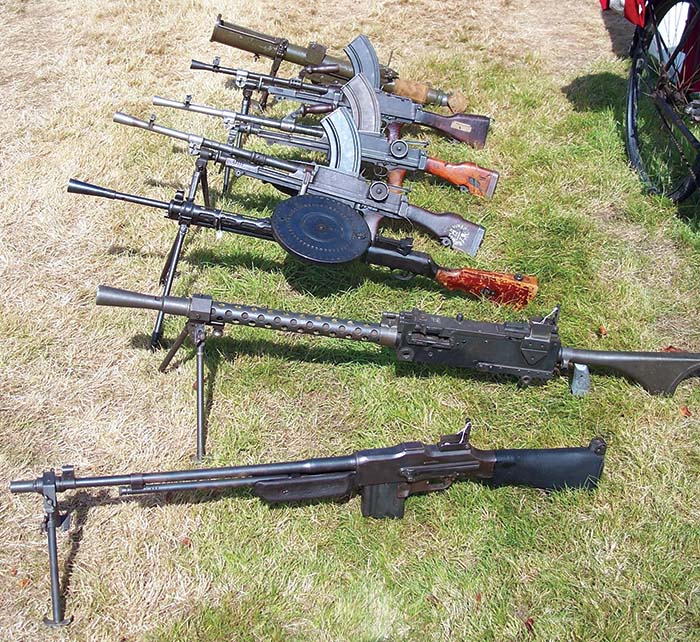
The Krebs Custom S12 combined with drum magazine or stick magazines is a different beast entirely than a tube fed shotgun, especially in a personal defense or LE environment. The combat shotgun’s utility should not be doubted or held in disdain once its role is understood. Not wanting to employ sideways math, but 20 rounds of buckshot in the MD Arms or Alliance Armament drum magazines translates into 180 projectiles sent downrange in a few seconds. My time with the Krebs Custom S12 convinced me that the Saiga S12 is worthy of consideration as an alternative to the tube-fed shotgun.
Sites of Interest
Krebs Custom, Inc.
1000 Rand Road
Wauconda, IL 60084
(847) 487-7776
www.krebscustom.com
MD Arms, Ltd.
PO Box 237
Casstown, OH 45312
(937) 552-9383
www.MDArms.com
AGP Arms, Inc.
1930 East 3rd Street #12
Tempe, AZ 85281
(480) 983-6083
www.agparms.com
Alliance Armament
1077 Mt. Gilead Rd.
Boonville, IN 47601
(812) 897-4908
www.alliancearmament.com
Echo Valley Training Center
www.echovalleytrainingcenter.com
| This article first appeared in Small Arms Review V19N4 (May 2015) |



